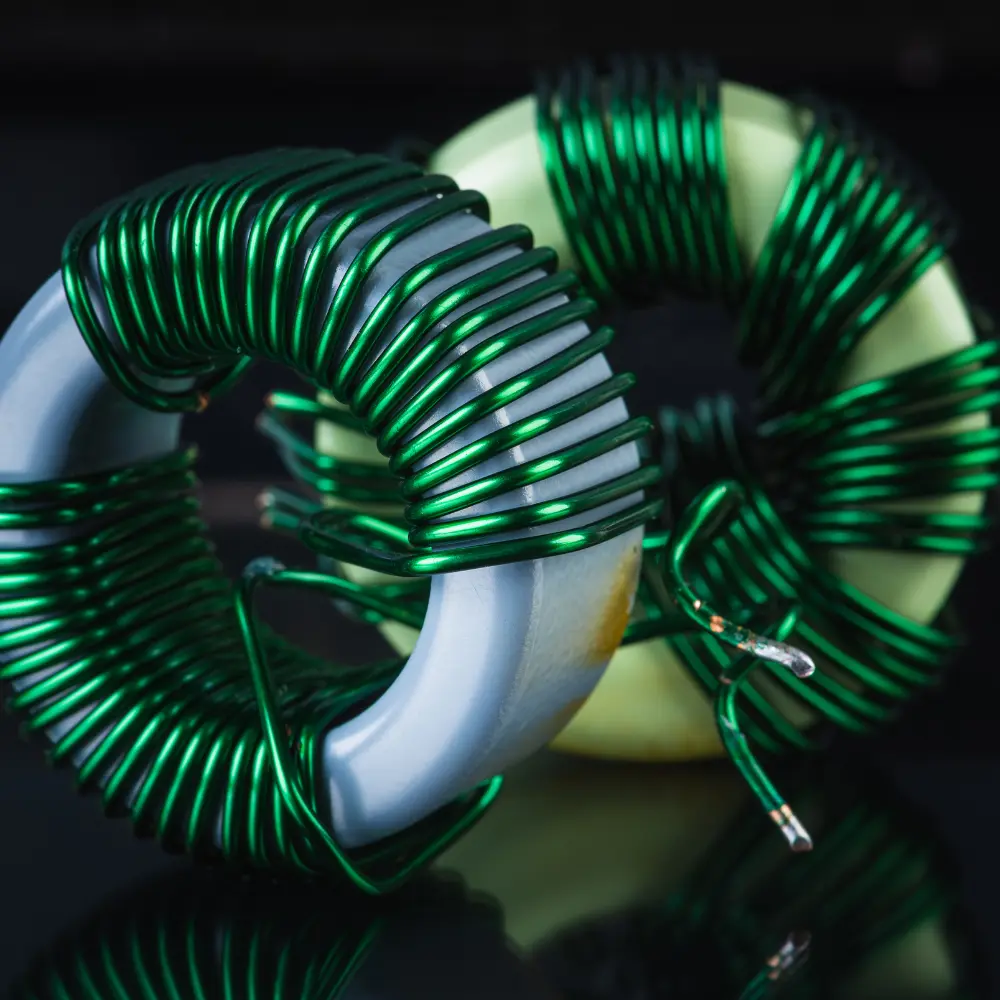LED lights are becoming more and more prevalent as technology gets better and more affordable. This type of lighting offers so many benefits over traditional lighting options, which include:
- Energy Efficiency: Consumes significantly less electricity.
- Longer Lifespan: Lasts many times longer than traditional bulbs.
- Durability: More resistant to breakage and vibration.
- Improved Safety: Emits very little heat, reducing fire risk.
- Eco-Friendly: Contains no mercury and reduces carbon emissions.
- Better Color Rendering: Offers excellent color accuracy.
- Instant On and Dimmability: Lights up instantly and can be dimmed.
- Versatility in Design: Allows for innovative and compact designs.
- Operational in Cold Temperatures: Performs well in cold environments.
- Reduced Light Pollution: Can be designed to direct light precisely, reducing waste.
LED Lighting and Toroids
 In modern lighting, LED (Light Emitting Diode) technology is a beacon of efficiency, sustainability, and innovation, transforming how we illuminate our spaces. At the heart of this lighting revolution, toroidal transformers play a crucial role, serving as unsung heroes that bolster the performance and reliability of LED systems.
In modern lighting, LED (Light Emitting Diode) technology is a beacon of efficiency, sustainability, and innovation, transforming how we illuminate our spaces. At the heart of this lighting revolution, toroidal transformers play a crucial role, serving as unsung heroes that bolster the performance and reliability of LED systems.
These transformers, known for their doughnut-shaped cores, are instrumental in converting and regulating power to meet the precise needs of LED fixtures. By ensuring a stable and efficient power supply, toroids help maximize the inherent benefits of LED lighting—such as energy efficiency, longevity, and quality of light—making them an integral component in the seamless operation of modern LED lighting solutions. Through this symbiotic relationship, toroidal transformers and LED technology pave the way for a brighter, more energy-efficient future.
What are the Benefits of Using Toroids in LED Lighting
- High Efficiency: A toroidal transformer reduces energy losses during electrical power transfer between circuits. Its design minimizes core losses (due to the magnetic material’s continuous path) and winding losses (because the windings are evenly distributed around the core). This efficiency is crucial in LED lighting to convert electrical power to the precise voltage and current needed with minimal loss, ensuring more input energy is used for lighting rather than wasted as heat.
- Compact Size and Weight: The toroidal shape allows for more efficient use of space and materials, resulting in a transformer that is lighter and smaller than equivalent traditional transformers. This compactness is achieved by a doughnut-shaped core with windings that cover its entire surface, optimizing the magnetic field and reducing the volume of non-active materials. In LED lighting, the transformer can be easily integrated into the design without significantly increasing the size or weight of the lighting fixture.
- Low Electromagnetic Interference (EMI): Toroidal transformers generate less EMI because the magnetic field is more contained within the core’s shape. This containment is due to the core’s circular design, which confines the magnetic flux to a tighter loop. For LED lighting, this translates to less risk of the transformer causing flicker or dimming issues and reduces the chance of affecting nearby electronic devices with electromagnetic noise.
- Lower External Magnetic Field: The toroid’s design naturally confines its magnetic field closer to its center, significantly reducing the strength of the field that extends beyond the transformer. This feature is significant in LED lighting systems close to sensitive electronics, as it minimizes potential interference or disruption caused by stray magnetic fields.
- Thermal Performance: The even distribution of windings around the toroidal core allows for a more uniform thermal profile, which enhances heat dissipation. Better thermal management within the transformer ensures that heat is less likely to build up to levels that could affect the performance or lifespan of both the transformer itself and the LED components it powers.
- Customizability: Toroidal transformers can be customized more readily regarding their voltage and current output by adjusting the number and ratio of windings around the core. This adaptability allows for precise matching with the electrical requirements of LED lighting systems, optimizing their performance and efficiency by providing the exact power needed without excess.
- Reduced Noise: The design of a toroidal transformer inherently produces less mechanical hum and vibration. This is because the core is a solid piece without any air gaps, and the windings are tightly wound and evenly distributed, reducing the potential for vibration. In LED lighting applications, especially in quiet environments, this ensures that the lighting system does not introduce annoying sounds.
LED lighting is one of the many modern technologies that greatly benefit from toroidal transformers and custom coil winding. From medical devices to personal transportation, toroids can be found almost everywhere you go.

